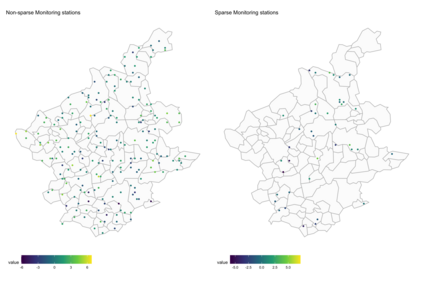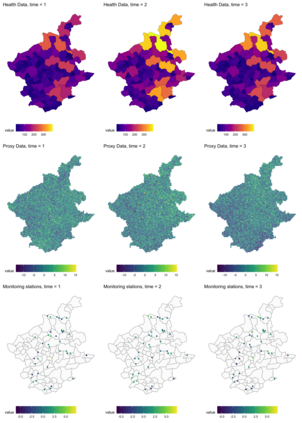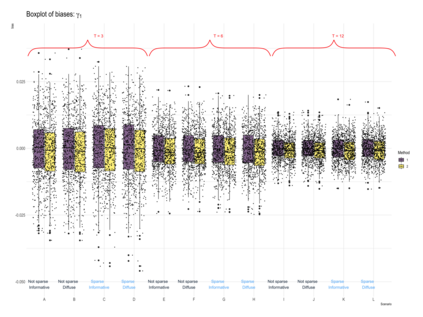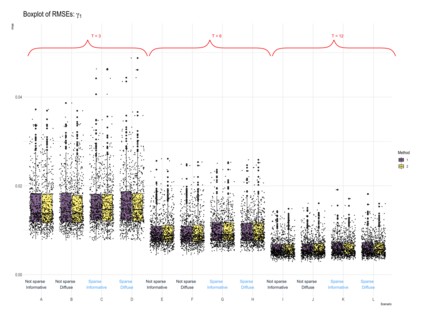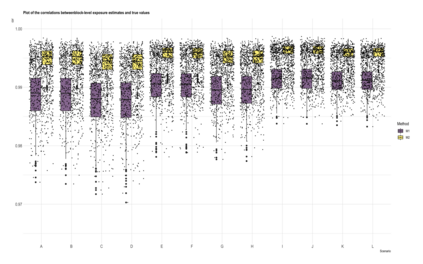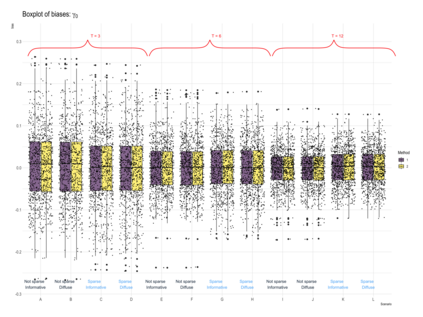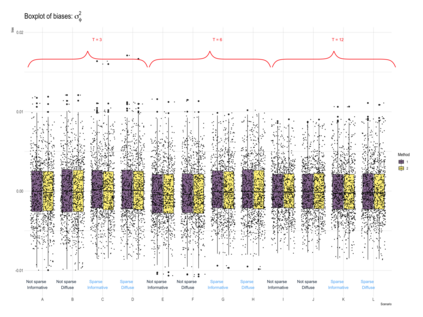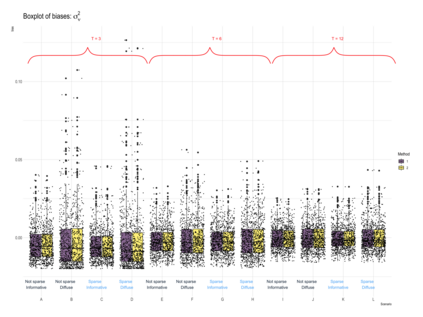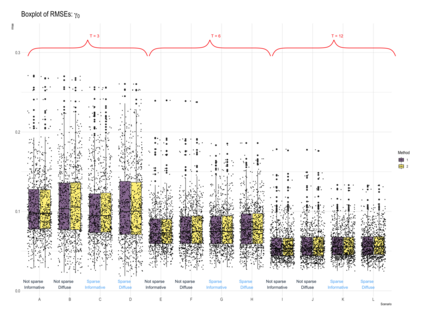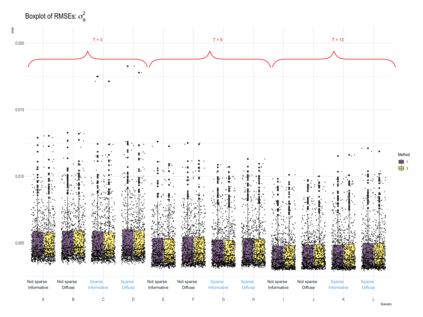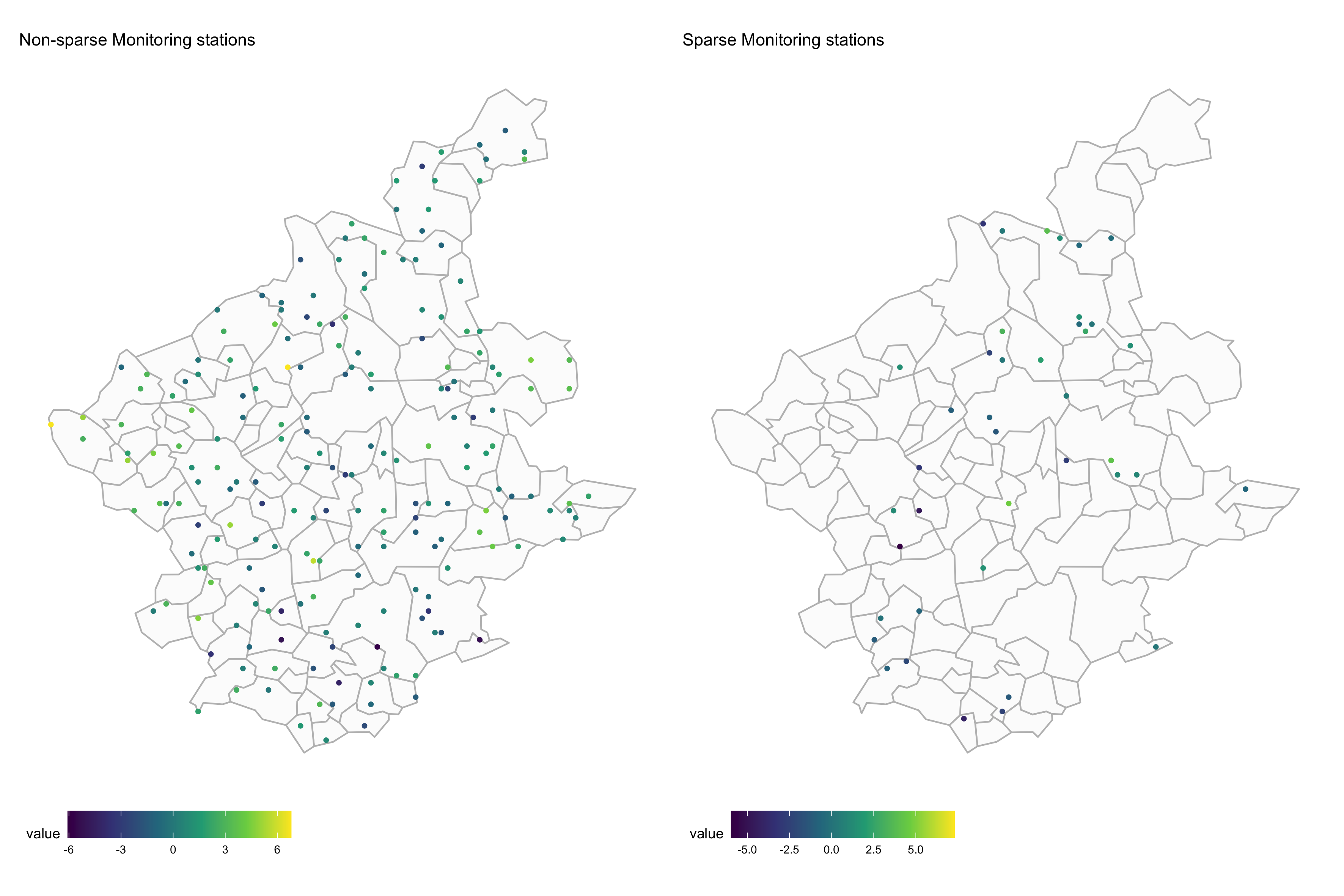This paper proposes a two-stage estimation approach for a spatial misalignment scenario that is motivated by the epidemiological problem of linking pollutant exposures and health outcomes. We use the integrated nested Laplace approximation method to estimate the parameters of a two-stage spatio-temporal model; the first stage models the exposures while the second stage links the health outcomes to exposures. The first stage is based on the Bayesian melding model, which assumes a common latent field for the geostatistical monitors data and a high-resolution data such as satellite data. The second stage fits a GLMM using the spatial averages of the estimated latent field, and additional spatial and temporal random effects. Uncertainty from the first stage is accounted for by simulating repeatedly from the posterior predictive distribution of the latent field. A simulation study was carried out to assess the impact of the sparsity of the data on the monitors, number of time points, and the specification of the priors in terms of the biases, RMSEs, and coverage probabilities of the parameters and the block-level exposure estimates. The results show that the parameters are generally estimated correctly but there is difficulty in estimating the latent field parameters. The method works very well in estimating block-level exposures and the effect of exposures on the health outcomes, which is the primary parameter of interest for spatial epidemiologists and health policy makers, even with the use of non-informative priors.
翻译:本文提出了空间错配假设的两阶段估计方法,其动机是将污染物暴露与健康结果联系起来的流行病学问题。我们使用综合嵌套拉普尔近似法来估计两阶段时空空间模型的参数;第一阶段是将健康结果与接触联系起来的暴露模型;第一阶段以巴耶斯模拟模型为基础,该模型为地理统计监测数据和卫星数据等高分辨率数据提供了一个共同的潜在领域。第二阶段适合GLMMM,使用估计潜在场的空间平均数以及额外的空间和时间随机效应。第一阶段的不确定性通过反复模拟潜在场的外观预测分布来计算;进行了模拟研究,以评估数据对监测、时间点以及以前在偏差、RMSE和覆盖范围等高清晰度数据方面的影响。第二个阶段适合GLMMM,使用估计的潜伏场的空间平均数和区际暴露估计的概率。第一阶段的不确定性通过反复模拟从潜伏场的预测分布得到解释; 实地的预测结果显示,对实地风险的预测结果,即对实地风险水平的预测,对实地的预测,对实地的测深层风险的测算,对实地的测测算结果的测算,对实地的测测测测测测测测测测测测值是实地的数值的概率的难度是实地的难度。

